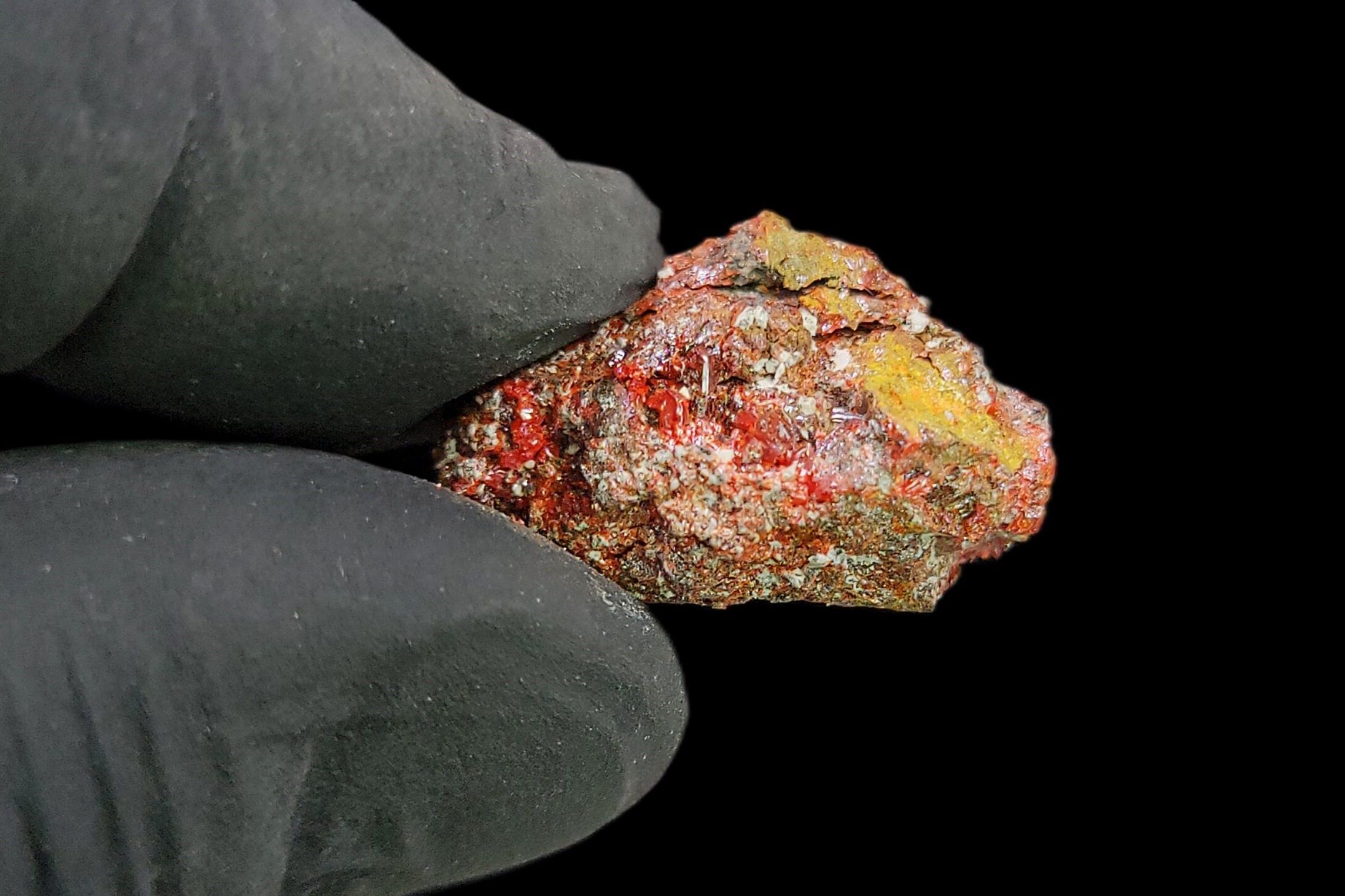
What is Lorándite? Lorándite is a rare mineral with a striking red hue, primarily composed of thallium arsenic sulfide. Found mainly in the Allchar deposit in North Macedonia, this mineral has intrigued scientists and collectors alike. Why is Lorándite important? It holds significance not just for its beauty but also for its potential in neutrino detection, which could provide insights into solar processes. Where can you find Lorándite? While the Allchar deposit is the most famous source, smaller quantities have been discovered in other parts of the world. Is Lorándite safe? Handling it requires caution due to its thallium content, which is toxic. How is Lorándite used? Beyond scientific research, it’s a prized specimen for mineral collectors. Dive into these 25 fascinating facts about Lorándite to learn more about this captivating mineral.
Key Takeaways:
- Lorándite is a rare mineral with unique properties, including its deep red color and use in studying solar neutrinos. It's found in specific locations and requires careful handling due to its softness and toxic thallium content.
- Collectors treasure lorándite for its rarity, but it must be handled gently and stored in a stable environment. Its association with thallium requires precautions, making gloves essential for handling.
What is Lorándite?
Lorándite is a rare mineral with a fascinating history and unique properties. Found primarily in a few locations worldwide, it has intrigued scientists and collectors alike. Here are some intriguing facts about this mineral.
- Lorándite is a thallium arsenic sulfosalt mineral with the chemical formula TlAsS₂.
- It was first discovered in 1894 in the Allchar deposit in North Macedonia.
- The mineral is named after Hungarian physicist Loránd Eötvös.
- Lorándite typically forms in hydrothermal veins and is often associated with other minerals like realgar and orpiment.
- It is known for its deep red color, which can sometimes appear almost black.
Unique Properties of Lorándite
Lorándite's unique properties make it a subject of interest for both scientific research and mineral collectors. Let's delve into some of these properties.
- It has a Mohs hardness of 2 to 2.5, making it quite soft and easily scratched.
- Lorándite has a specific gravity of 5.53, which is relatively high for a mineral.
- The mineral exhibits perfect cleavage in one direction, which means it can split easily along a flat plane.
- It is transparent to translucent, allowing light to pass through it to varying degrees.
- Lorándite has a sub-metallic to adamantine luster, giving it a shiny, reflective surface.
Scientific Significance of Lorándite
Lorándite is not just a pretty mineral; it holds significant scientific value, particularly in the field of particle physics.
- It is used in the study of solar neutrinos, which are elementary particles produced by the sun.
- The Allchar deposit is considered a natural neutrino detector due to the presence of lorándite.
- Scientists study lorándite to understand the sun's core processes and the behavior of neutrinos.
- The mineral's ability to capture solar neutrinos makes it a valuable tool for astrophysical research.
- Research on lorándite contributes to our understanding of fundamental particles and forces in the universe.
Where Can You Find Lorándite?
Lorándite is not found just anywhere; its occurrence is limited to specific geological settings. Here are some places where it can be found.
- The primary source of lorándite is the Allchar deposit in North Macedonia.
- It has also been found in the Lengenbach Quarry in Switzerland.
- Small amounts have been discovered in the United States, particularly in Nevada.
- Lorándite occurrences have been reported in Romania and Japan as well.
- The mineral is often found in association with other thallium minerals, such as hutchinsonite and crookesite.
Collecting and Handling Lorándite
Given its rarity and unique properties, lorándite is a prized specimen for mineral collectors. However, handling it requires some care.
- Due to its softness, lorándite should be handled gently to avoid scratching or damaging it.
- It is best stored in a stable environment, away from extreme temperatures and humidity.
- Lorándite specimens should be kept in a display case to protect them from dust and accidental damage.
- Collectors often use gloves when handling lorándite to prevent oils from their skin from affecting the mineral's surface.
- Given its thallium content, lorándite should be handled with care, as thallium is a toxic element.
Final Thoughts on Lorándite
Lorándite, a rare thallium arsenic sulfide mineral, holds a unique place in both geology and physics. Its striking red color and crystal structure make it a collector's gem, while its role in neutrino detection offers scientific intrigue. Found primarily in Macedonia's Allchar deposit, lorándite's rarity adds to its allure. This mineral's ability to help scientists study solar neutrinos highlights its importance beyond mere aesthetics. Whether you're a mineral enthusiast or a science buff, lorándite offers something fascinating. Its dual appeal as both a beautiful specimen and a scientific tool makes it a standout in the world of minerals. So next time you come across a piece of lorándite, remember, you're holding a small but significant part of our quest to understand the universe.
Frequently Asked Questions
Was this page helpful?
Our commitment to delivering trustworthy and engaging content is at the heart of what we do. Each fact on our site is contributed by real users like you, bringing a wealth of diverse insights and information. To ensure the highest standards of accuracy and reliability, our dedicated editors meticulously review each submission. This process guarantees that the facts we share are not only fascinating but also credible. Trust in our commitment to quality and authenticity as you explore and learn with us.
